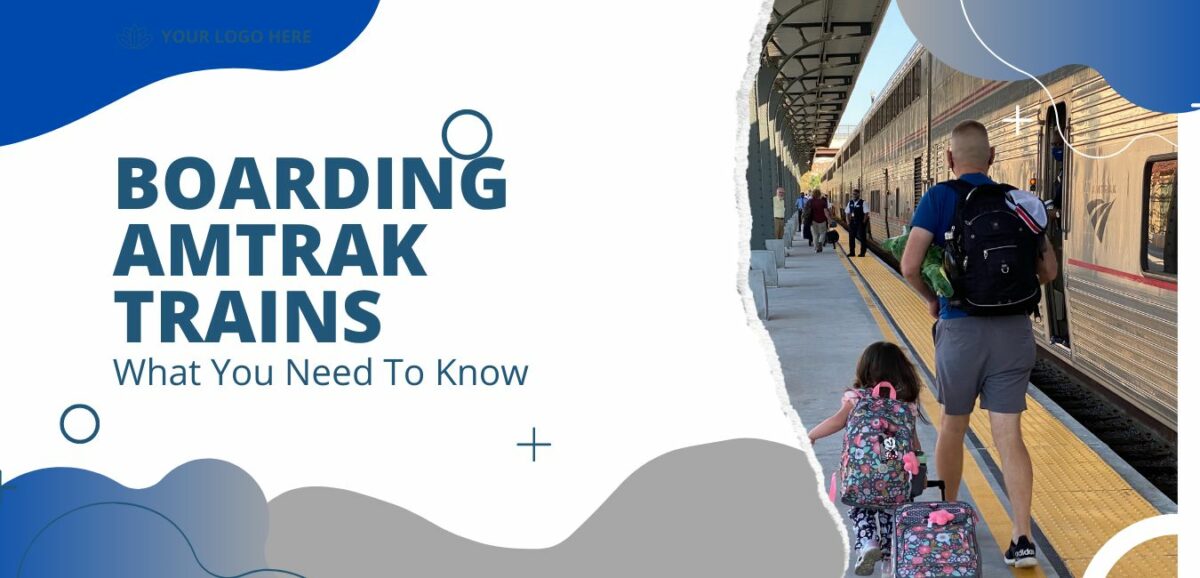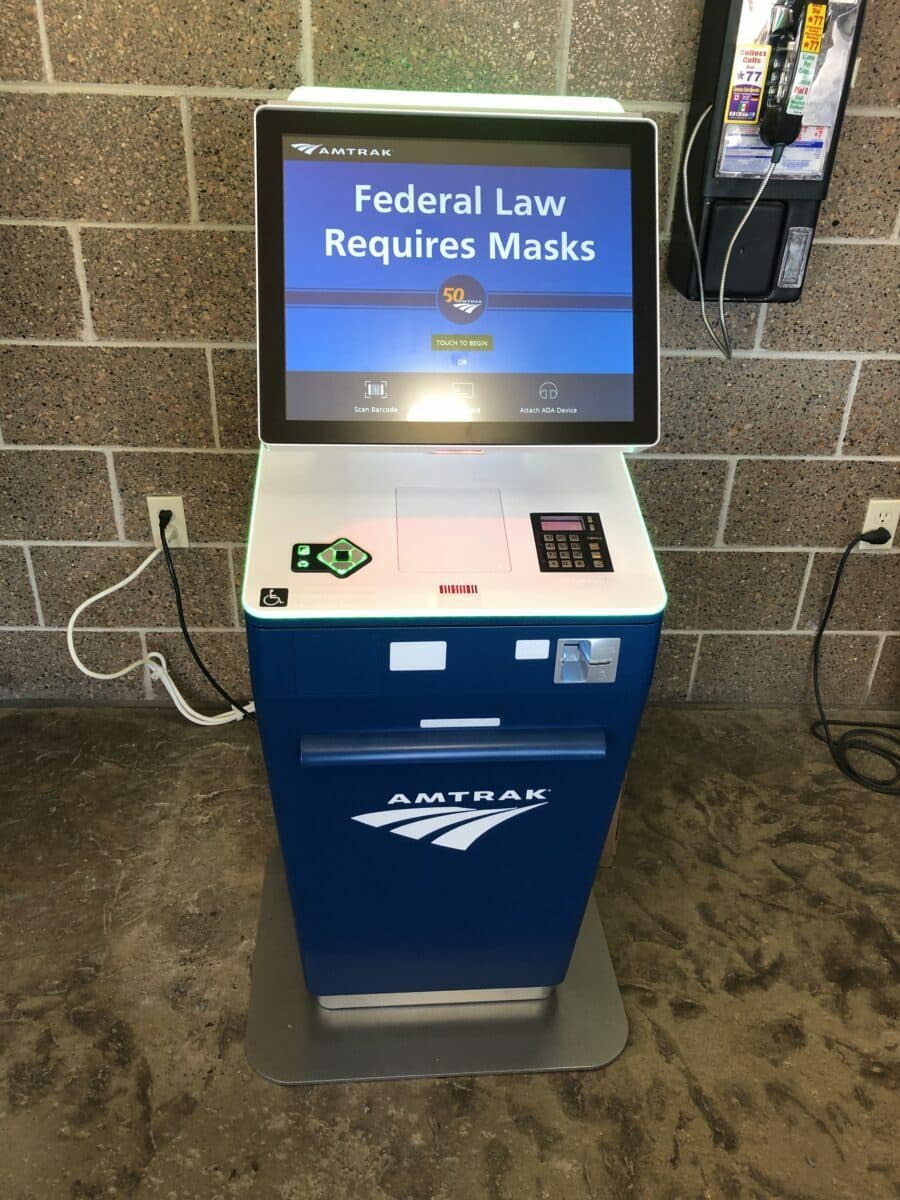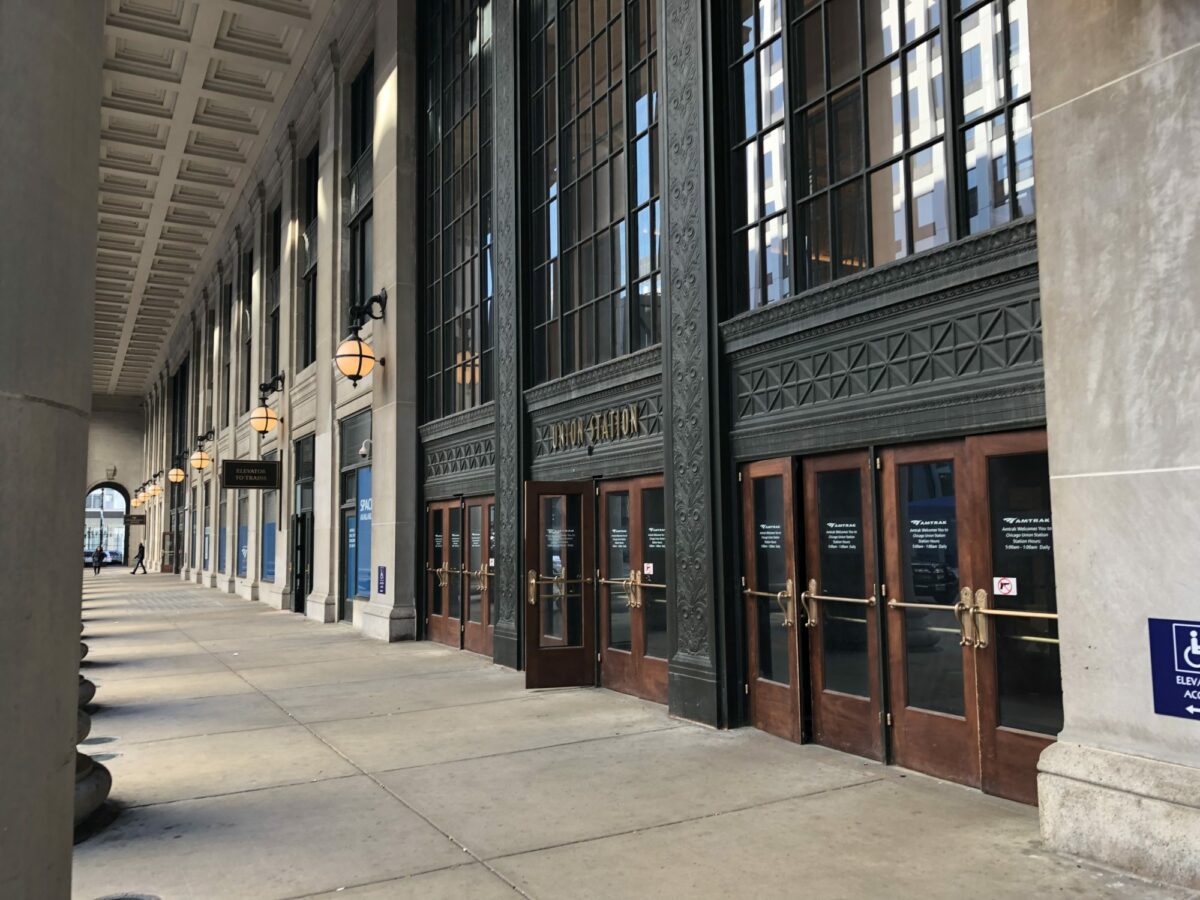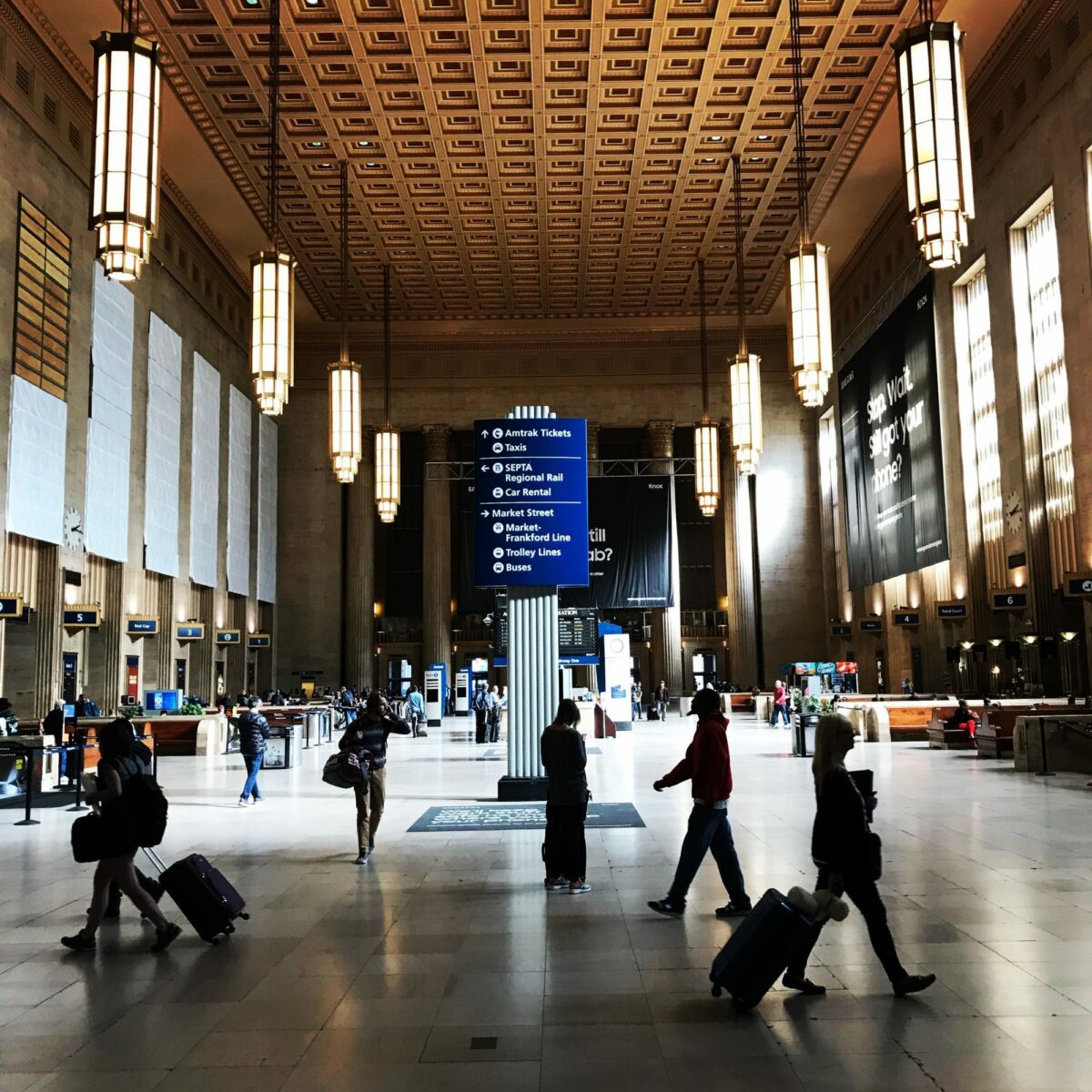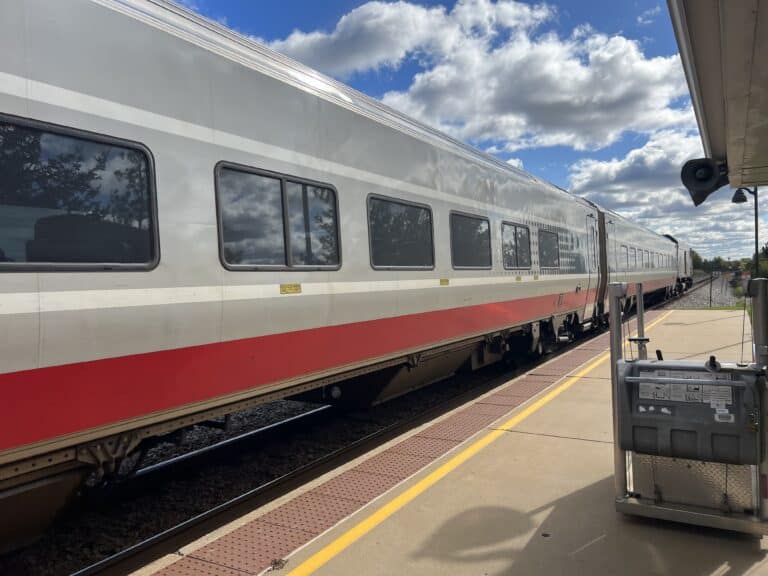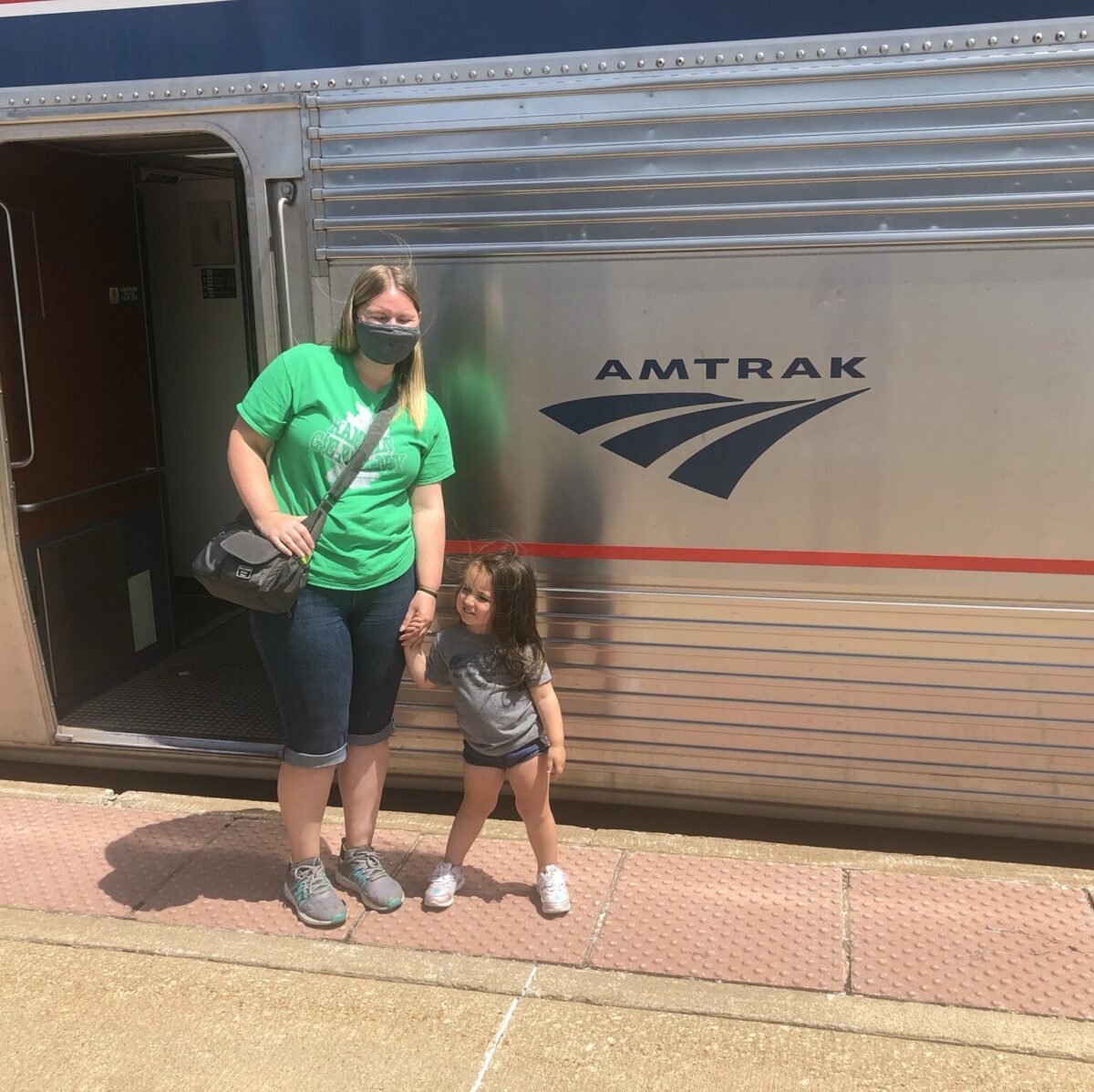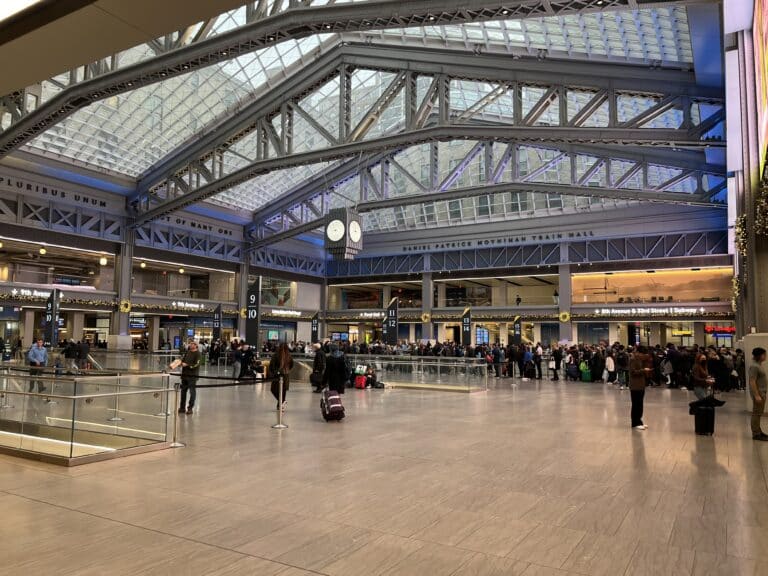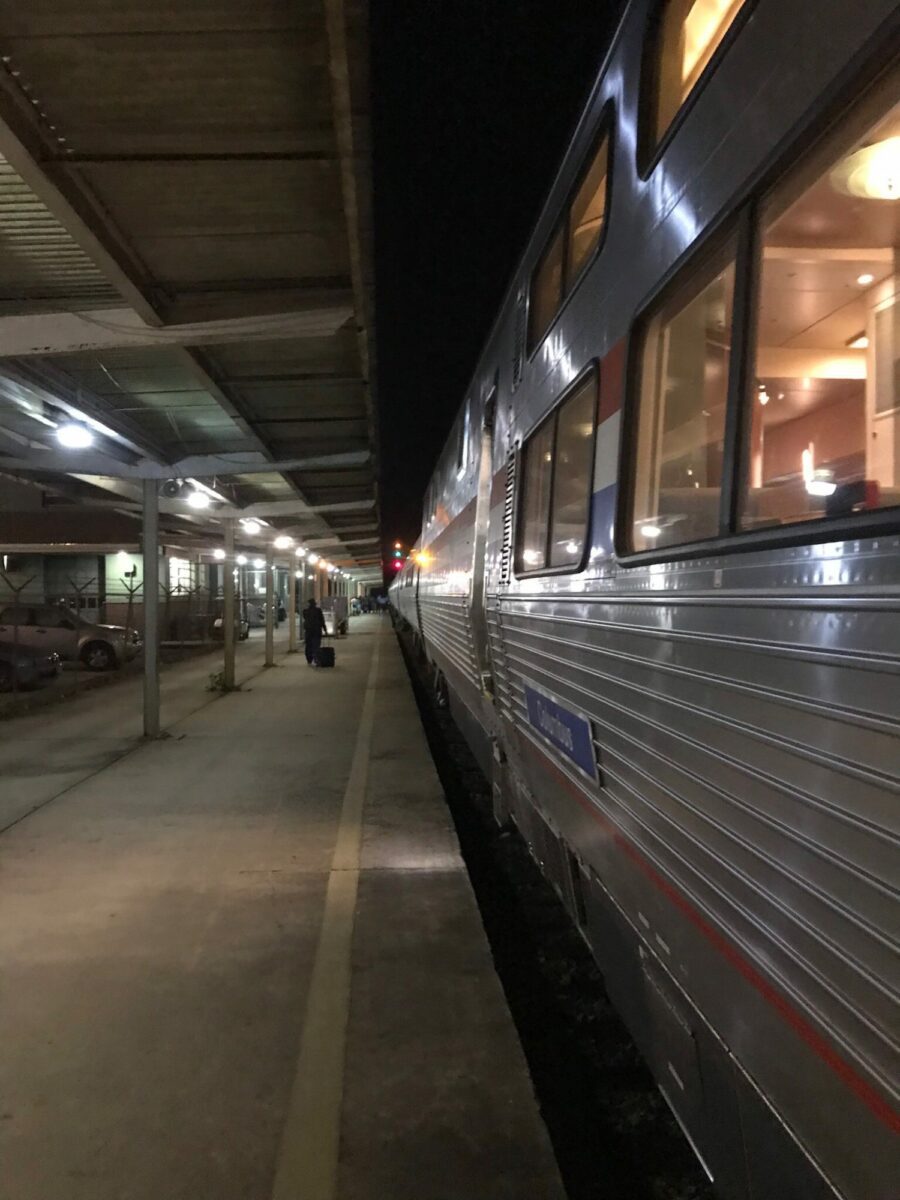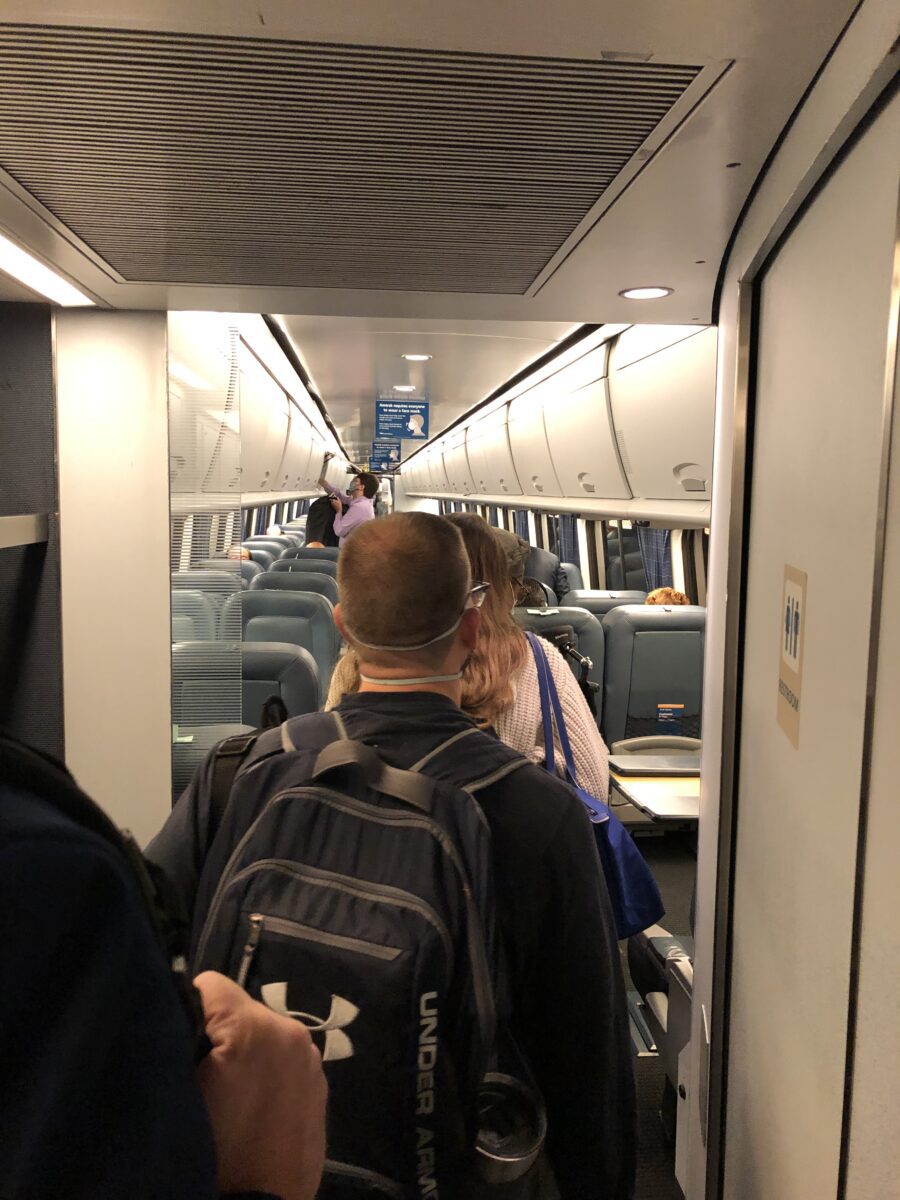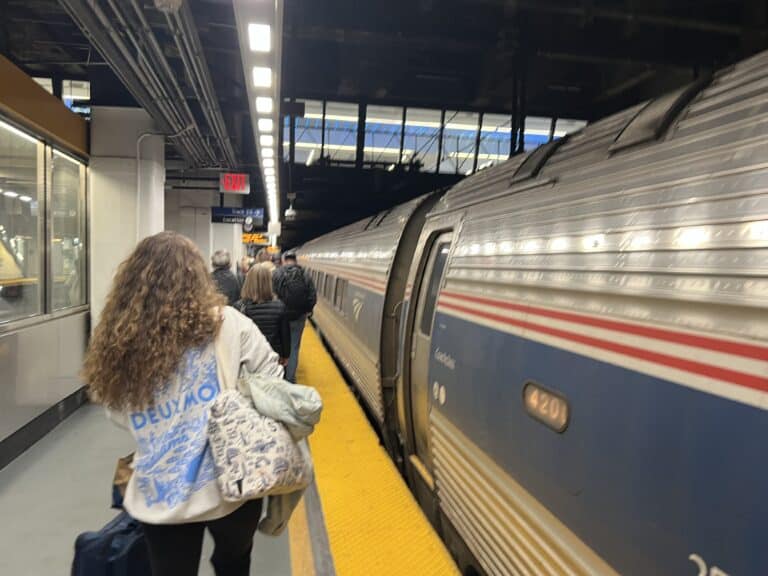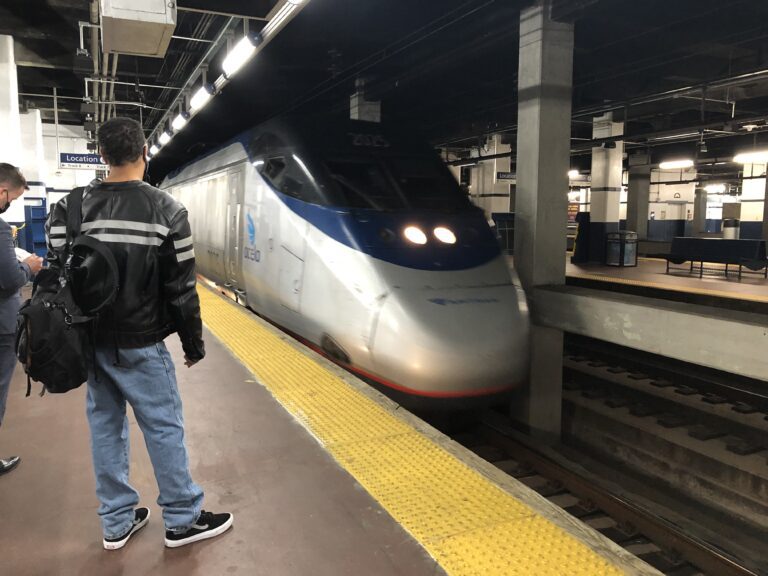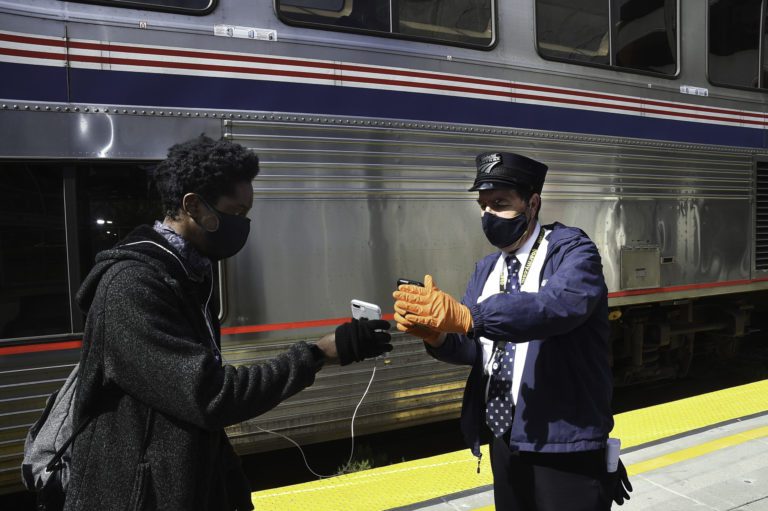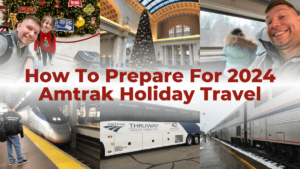Welcome aboard, fellow travelers! If you’re reading this, you’re probably getting ready for an Amtrak adventure, and I’m here to help you through the boarding process. While boarding an Amtrak train can seem daunting for your first trip, you can master it and look like a pro in no time.
Amtrak stations come in different sizes and styles, from staffed hubs to unstaffed platforms and even mysterious flag stops. This article will share my tips and tricks from years of Amtrak travel.
So grab a snack, get comfortable, and we will get your journey started on the right track. I’m excited to have you along for the ride!
Preparing to board an Amtrak train starts at home.
Before heading to the station, I recommend doing a few things.
Buy your tickets before your trip
Before leaving for your trip, the first thing to do is buy your tickets.
You can buy them online, in the app, over the phone, or at staffed stations.
If you are new to train travel, you will soon learn that not all stations have ticket agents, such as unstaffed stations. Many, but not all, stations have Amtrak Quik-Trak machines where you can purchase a train ticket or print it out if you already have one.
If you wait to buy a ticket until your day of travel, you may find the trains sold out or pay more than you want.
Buying your tickets beforehand may give you a better price and peace of mind.
Do not plan to buy tickets on the train.
Most Amtrak trains do not allow ticket purchases. If you board a full train without a purchased ticket, you could get let off at the next stop.
Do you need special accommodations?
If you need accessibility accommodations or help getting on, off, or on the train, let Amtrak know when booking. If you have a service or comfort animal, ensure your animal qualifies and follow the Amtrak service animal policy for booking.
Verify everything is correct before boarding an Amtrak train
One thing I do before my trips is log into my Amtrak account or app to verify my ticket info.
I am looking for any last-minute changes I may have missed and ensuring everything is correct on my tickets, hotels, and schedule. I like to do this a day after I book things, too. Also, check for any service advisories.
Sometimes, changes occur, like departure times or rooms, that you may have missed. If barcodes in the app do not show up, call Amtrak as soon as possible to see what is going on with your trip.
Research your stations
Many Amtrak stations, especially in small towns, are unstaffed and can range from a building to wait in or there is just a platform. Either could also be a flag stop. Amtrak has staffed stations along the system, especially in bigger cities; some have lounges.
Doing some research before you leave can save you from last-minute panics. This way, you know what to expect.
Suggested questions to research about your stations:
- What services do they offer?
- Can you park for as long as you need?
- Do they have an indoor waiting area?
- Can you check bags?
- Are there bathrooms?
- Other needs you may have.
Making a dry run is an excellent way to familiarize yourself with a train station.
While this may not always be possible, especially at layover stations, if it happens to be your first time at a station and you can stop by, it can be a worthwhile trip.
If you plan to depart from a station staffed for your dry run, you could purchase your tickets there. This way, you can interact with someone from the station, ask questions, and become more familiar with the station layout.
How early should I arrive at the station when boarding an Amtrak train?
While it is up to you, there are some suggestions about when you should arrive at the station.
Amtrak suggests you arrive 30 minutes early if you do not check bags and 45-60 minutes if you do.
Consider some time for traffic, paying for parking, and figuring out where to go. The train will likely not wait for you if you are late.
At some stations, the train doors close five minutes before departure, so keep that in mind.
Boarding an Amtrak train at some stations starts ten to twenty minutes before departure.
At other stations, as soon as the train arrives, people board, and when the scheduled time hits, the train leaves with or without you.
Check the train’s status before leaving.
Before leaving for the station, check the status of your train by using the Amtrak app, calling Amtrak, or visiting a few third-party sites. Be aware that sometimes you may leave for the station before the train leaves. In that case, check for service advisories.
Amtrak offers a delay alert service that texts or emails you if the train runs late. You can sign up for this when you purchase your tickets or later. You do not need a reservation to use this service, so people picking you up can also sign up.
Do I need to check in for my Amtrak trip?
You do not need to check in 24 hours before with Amtrak, like when you fly.
The only time you may need to check in is if you use a lounge, more on that later, or some station check to ensure you are where you need to be for your journey.
Getting your luggage ready for boarding an Amtrak train
Whether you carry on or check, all bags must have a tag with your name, phone, email address, or both.
Carry-on
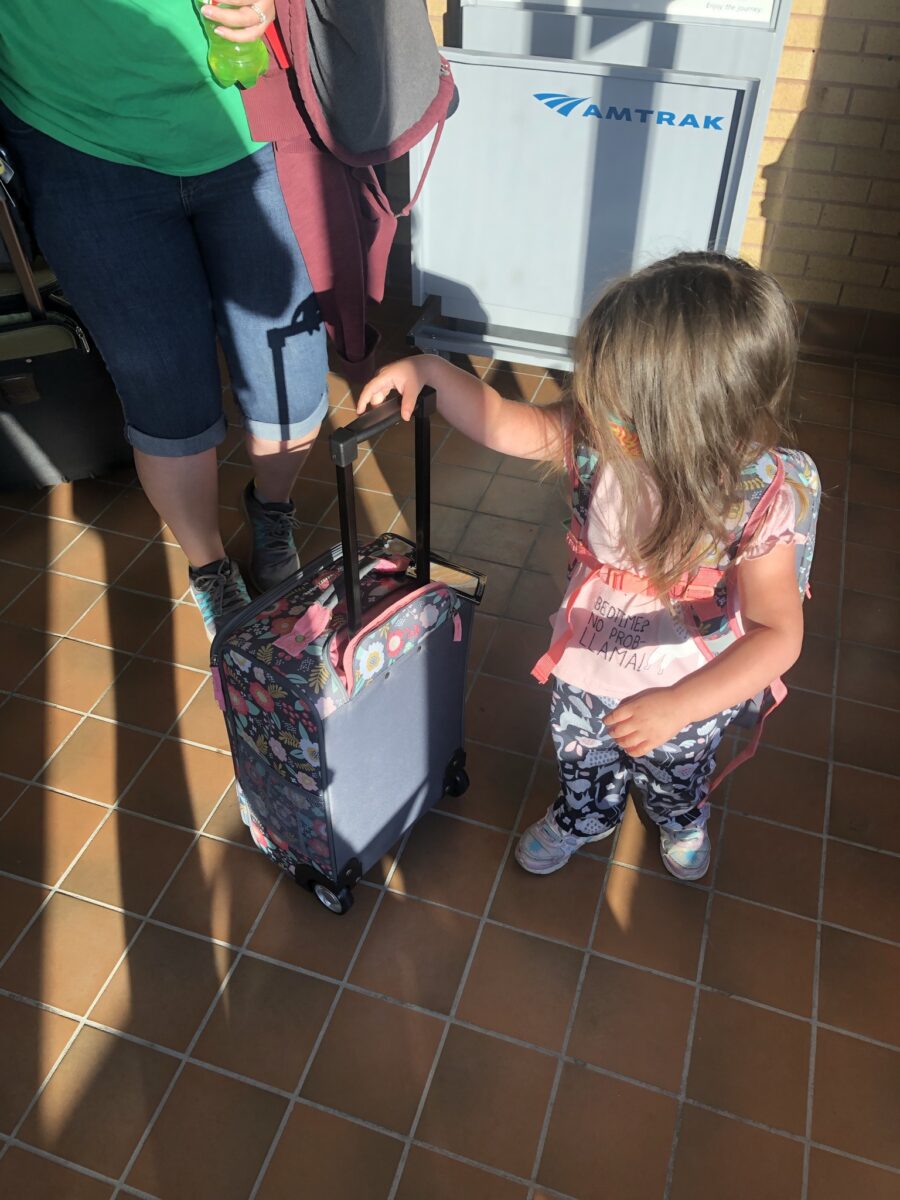
Each passenger may carry on:
- One personal item, 25 lbs. (12 kg) and 14 x 11 x 7 inches, and
- Two carry-on pieces of luggage, 50 lbs. (23 kg) and 28 x 22 x 14 inches each
- If you transfer to the Pacific Surfliner at some point along your journey, the baggage size for that train is up to 28 x 22 x 11 inches each.
Charges apply for additional and oversized luggage; check out Amtrak’s carry-on bag policy for more information.
Checked Bags
If your beginning and ending stations must have checked bagged service, you can check bags on many Amtrak trains. The app and train indicate if you can check bags on your journey.
Stations With Self-Service Checked Baggage
Self-serve trainside checked baggage service is available to and from the following stations only: Charleston, WV; Cincinnati, OH; Columbus, WI; Crawfordsville, IN; Dyer, IN; Hammond, LA; Lafayette, IN; Meridian, MS; Mount Pleasant, IA; Rensselaer, IN; Texarkana, AR; Tuscaloosa, AL; Winona, MN.
Checking your bags mid-route
I have an advanced Amtrak check-bag travel tip; you can check bags mid-route.
For example, if you travel from Sturtevant, WI, to DC, you must carry your bags onto the Hiawatha, but when you get to Chicago, you can check your bags there and grab them in DC. But be aware, in most cases, you need to do this 45 minutes before your train departure.
Boarding an Amtrak train at an unstaffed station
Check for signs with boarding instructions for unstaffed stations, but know there may be none, mainly if only one track is used for boarding.
If there is only one platform at the station, things are more straightforward: wait behind the yellow line for the train to come. If there are two, check for signs.
A few unstaffed stations have announcements, such as Sturtevant Depot, where there are two tracks.
At this station, conductors or other Amtrak staff can remotely inform passengers the train is coming, what train track it is on, or make other announcements.
Whatever the case, prepare your belongings and tickets when you see the headlights because the train will arrive soon!
At flag stops, the train only stops if you purchased a ticket before the train’s arrival.
As the train pulls up
Ensure you are in the right spot before the train arrives and visible to the crew; sometimes, two trains arrive at or close to the same time.
You want to board the one going in the right direction. Also, have your bags and ticket handy to speed things up!
To speed up the process, it helps to watch the train for your accommodations as it rolls in so you can head towards where you need to go when it stops.
Once the train stops, the conductors and attendants will open doors and step off the train, but be aware that not all doors will open. If you are trying to get off the train, do not open any doors; find an open door.
Depending on the train, you may be assigned a seat before boarding and told to go to a specific car based on your destination. When they ask, tell them the stop where you get off that train, not your final stop, if you are transferring. This information is on your ticket.
Boarding an Amtrak train at a staffed station
Where You Can Wait For Your Train
If you are in coach class, check for waiting areas. Check for a lounge if you are a sleeper passenger or first-class Acela. You will wait in the shared waiting area if there is no lounge. Sometimes, you can buy a lounge pass for the day if you have coach or business class reservations.
Some stations, mainly the larger ones, have food service areas or convenience stores where you can get something. Most staffed stations offer baggage storage for a fee, often $10 for 24 hours.
Red Cap or other assistance services are available at many stations to help passengers who need assistance to or from their train. These services could include a wheeled chair or a cart.
Verification & Checking Your Bags
Some smaller staffed stations like to verify that you are at the station at the right time for the train and on the travel date. I mainly experienced that in Omaha.
Reminder: If you want to check bags, Amtrak requires you to check your bag 45 minutes before your scheduled departure time.
Some stations may let this rule slide; it is best to assume they do not. Remember that both stations need to offer a check bag service.
As the train pulls up
When the time approaches for your train to arrive, ensure you can hear announcements, or at least one person in your travel party can, so you know when to get ready and where to go. If you are at an originating stop, like Chicago, they can call you earlier than expected.
When it is time to board the train, the staff will help you get to the right spot on the platform or tell you what platform you need to use. While walking to the train, ensure your ticket is ready to be scanned.
Finally, it was time to board an Amtrak train.
The train is here, and it is time to board, or is it? It is!
Before I enter this section, I want to emphasize listening to the staff’s words to understand the process.
I often see people not listening to instructions, and then they slow down the boarding process.
The key points to listen for from station staff are the train’s number plus the gate and track information. Additionally, listen to instructions on the position of your accommodations.
Long-distance Trains Coach Class
Meet the train where the station staff tell you and look for the conductors and staff who will direct you to the right car. Coach passengers on long-distance trains often receive a seat check or tag, which is the seat assignment.
Long-distance Trains Sleeping Accommodations
If you have sleeper accommodation, you are assigned a car and room after completing your reservation, so check your tickets. There is no need to cut in line or push and shove. No one will take your room.
I have seen people rush because they didn’t want someone to take “their” room. (Eye roll)
Walk to the car that matches your reservation; the car number is four digits and displayed by the door.
The car attendant will often meet you at the door unless you are boarding late at night when a conductor may help you.
Regional Trains
Some regional trains have open seating, meaning you can enter through any door and sit anywhere. Occasionally, conductors will assign you a car; sometimes, due to short platforms, not all doors will open.
If you are a business class passenger, look for that car or ask a conductor. Often, business class is near the cafe car.
Acela
On Acela trains, when you book, you are assigned a car and a seat that you can change for free.
As you walk up, look for your car number, enter, and find your spot. Please do not ignore your assigned seat because you don’t like it or you don’t think it is essential. Another passenger may have picked where they wanted to work or to sit with a fellow traveler; this has happened to me.
When boarding an Amtrak train, do they need my ticket?
Conductors use an iPhone-type device with a scanner to scan your bar or QR code. Depending on the number of segments, the same barcode could get scanned a few times along your trip.
Depending on how many people are boarding, the conductors may scan your tickets before or as you board, or they may wait till you board the train and are seated.
There has been a time or two when I was the only one boarding the train, and the conductor looked at me and asked Kevin? I said yup, and he hit the button, and that was that.
The conductor may consult your car attendant and lift your ticket manually if you are a sleeper car passenger. Meaning they may never scan your ticket.
Boarding an Amtrak train wrap-up
Following these few steps will make boarding an Amtrak train easier:
- Be ready
- Pack light
- Make sure your luggage is in good shape!
- Plastic shopping bags and garbage bags are not great for luggage or approved.
- Research the stations you use to know what to expect.
- Have your tickets ready on paper or electronically to make the boarding process quicker.
- Listen to announcements, whether at a staffed station or an unstaffed station with a PA system.
- Keep an eye on the train’s status.
- Don’t push and shove; the train will leave after all passengers are onboard.
Boarding an Amtrak train is not complex when you know what is happening and are ready to go.
Thanks for stopping by, and I hope you found what you were looking for when boarding an Amtrak train.
Please check out my other article about riding Amtrak. If you found value in this information and want to ensure the site continues, help out here.
Safe Travels!
Kev

